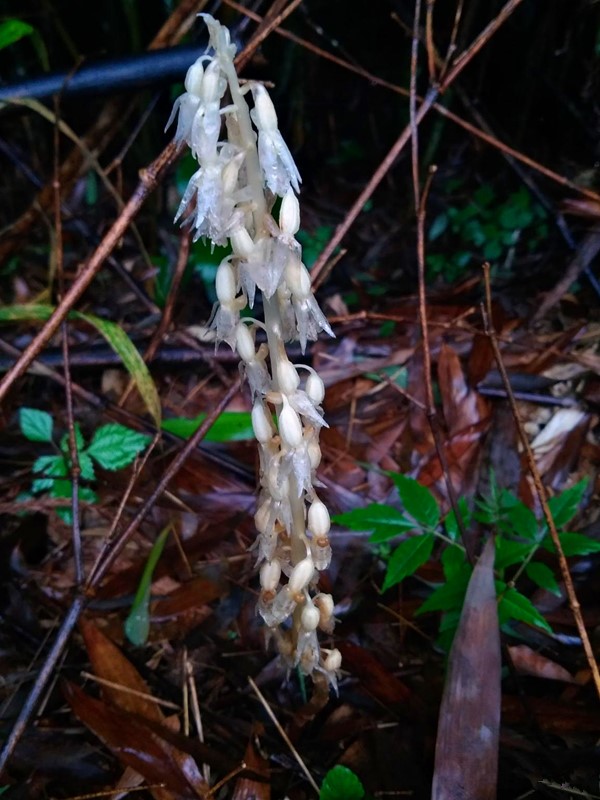New Recorded Species Discovered in Mangshan

In mid-June, staff of Mangshan National Nature Reserve in Yizhang County discovered a strange plant during their daily patrol. It was identified as a new recorded species in Hunan Province by Yu Xunlin, Specialist in Plant Taxonomy and Professor of Central South University of Forestry Science & Technology, named Epipogium Roseum.
It was reported that there were 6 strains of Epipogium Roseum in the area of about 2 square meters found at that time, and the flowers were blooming brightly, brilliant, silvery, elegant and beautiful. This discovery not only enriched the wild Orchidaceae resources in Mangshan Nature Reserve, but also was the first discovery of the epipogium plants in Hunan Province, which meant that a new genus and species were added to Hunan's species record.
Mangshan is a state-owned forest farm established in 1958. In 1982, it was approved by the Hunan Provincial People's Government to establish a provincial nature reserve, the earliest Nature Reserve in Hunan Province. In 1994, it was approved by the State Council as a national nature reserve with a total area of 19, 833 hectares and a forest coverage rate of 99.08 percent. Among them, the core area is 7372 hectares, the buffer area is 2835 hectares, and the experimental area is 9626 hectares.
According to investigation and statistics, 411 species of vertebrates have been recorded in Mangshan Nature Reserve. Four species of wildlife (yellow-bellied pheasant, white-necked pheasant, clouded leopard and forest musk deer) were protected at the first level, and 42 species were protected at the second level; 2400 species of vascular plants have been recorded, including three species of wild plants (Taxus chinensis var. mairei, Brassica chinensis and Brassica oleracea), 21 species of wild plants under the second-level national key protection, 222 species of ferns and 335 species of macrofungi.
According to records, Mangshan National Nature Reserve has more than 60 kinds of wild orchid plant resources, which have been listed in Appendix II of CITES.




